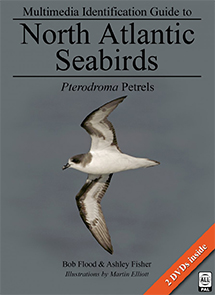Weekly birding round-up: 31 Aug - 6 Sept 2016
The first half of the week saw a ridge of high pressure to the south and low pressure to the northwest, resulting in a mild southwesterly flow across the whole country. A weak frontal system pushed into the high pressure on 31st but quickly dissipated. A low pressure then pushed into the west on 3rd and into the North Sea on 4th with another area of low pressure passing to the north of Scotland on 5th. High pressure then reasserted itself, building from the southwest into central Europe and bringing hot, humid conditions to end the week.
Given the above scenario it was no surprise that the week was once more dominated by birds from the west, in particular by some impressive movements of Cory’s and Great Shearwaters off Ireland and noticeable influxes of Pectoral and Buff-breasted Sandpipers . On the continental passerine front, the pickings were, by comparison, relatively meagre.
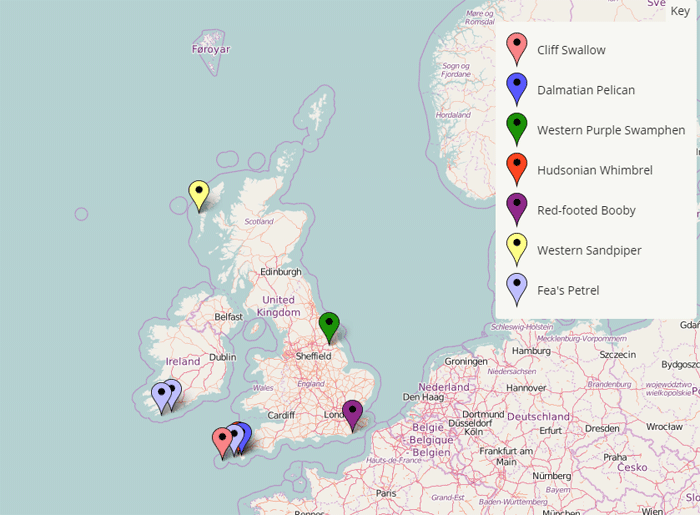
There seems to be no let-up these days in the supply of ultra-rare birds, even of ‘firsts’, and, sure enough, on the evening of 4th came news of a ‘new mega species’. Whatever it is, those three words mean that it’s something good! And it was too - a Red-footed Booby no less, picked up on the beach at St. Leonard’s-on-Sea, Sussex, taken into care and then handed over to the RSPCA for rehabilitation where it remained, apparently in need of some TLC, to 6th.
It is only two weeks ago that I was describing the occurrence of the Brown Booby off Kerry, writing: “warm water seabirds are on the rise around Britain and Ireland, comprising a high proportion of our recent mega-rarities…. more are doubtless on the way.” And now, within two weeks we have another booby - a fine pair one might almost say.
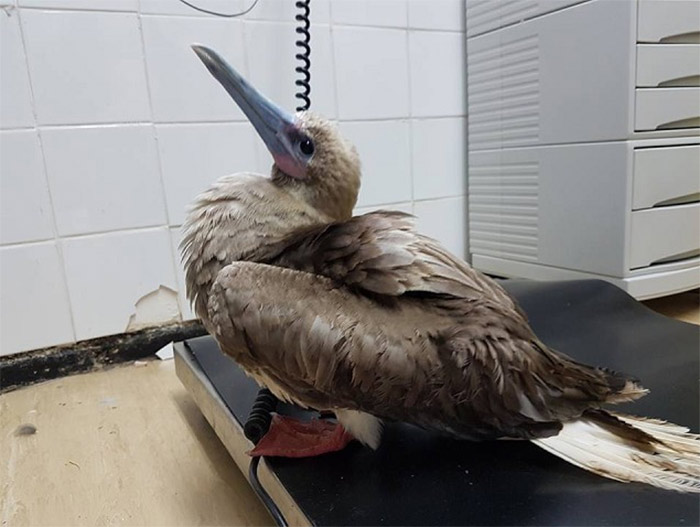
Red-footed Booby has a wide tropical waters distribution, the nearest breeding colonies to Britain being in the Caribbean. It is polymorphic, with white and white-tailed brown morphs predominating in Atlantic and Caribbean populations (fully brown morphs are absent or very rare here). Pacific adults occur in both a fully brown morph (white-tailed brown morphs are uncommon) and a white morph (white-tailed in Hawaii, dark-tailed in the Galapagos and mixed off Mexico).
The photographs of this bird show a brown bird with red legs, some red in the gular patch and facial skin, a bluish bill and a white tail. It therefore appears to be a white-tailed brown morph, consistent with a Caribbean origin, the most likely source area.
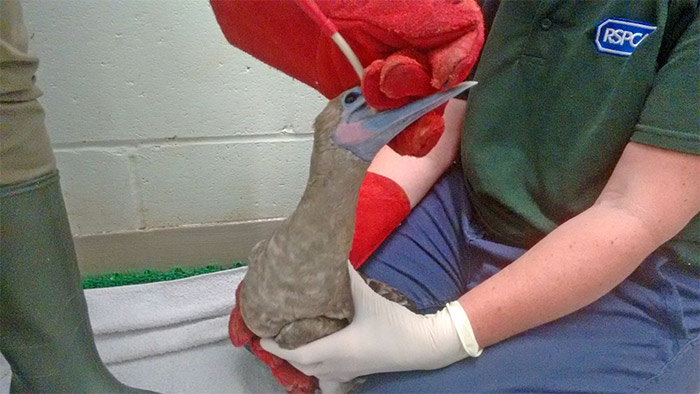
Red-footed Boobies are rare in North America, even in Florida, and have strayed only as far north as South Carolina. Against this background, the increasing number of records in the northeast Atlantic is perhaps surprising but this is certainly a species on the rise. The first Western Palearctic record was a bird off the Cape Verdes on 17th April 1977 and another was in the same island group in 1986. In the new millennium, the number of occurrences has increased dramatically, with more in the Cape Verdes (including a flock of seven) and records from the Canaries, the Azores, Spain and France, the latter inland just north of the Mediterranean coast. An occurrence in Britain is therefore perhaps not too surprising.
Obviously we hope for a speedy recovery and a rapid release for this bird. Quite when and how this might be undertaken remains unclear at the moment but it goes without saying that it would attract significant interest if conducted in public in a planned and managed fashion. Artificial ‘ticking rules’ aside (which might deny it a place on the list of the purist), this would be a fabulous bird to see in British waters!
No sooner had the news of the booby been digested than along came the next ultra-rarity, this time a Cliff Swallow on St. Mary’s, Isles of Scilly on the morning of 6th. Found in the delightful setting of Porth Hellick (which has also hosted Tree Swallow), it remained there, showing well, until 1435 when it flew off. It was, however, back again by early evening. If it stays, this may be a popular twitch. Cliff Swallows were almost regular for a while after the first (on Scilly in 1983) but since the last (also on Scilly in 2001) the trail of this species has gone well and truly cold. Of the eleven British and Irish records Scilly accounts for four but this species has also occurred on the east coast - at South Gare, Cleveland in October 1988 and at Spurn, Yorkshire in October 1995. The other records are in Ireland (in Kerry) and along the English south coast (in Dorset, Hampshire and Sussex). This new Scilly bird is, however, the earliest by some margin. Two previous records have been in the last couple of days of September but October has been the traditional time, with records into November and even December.
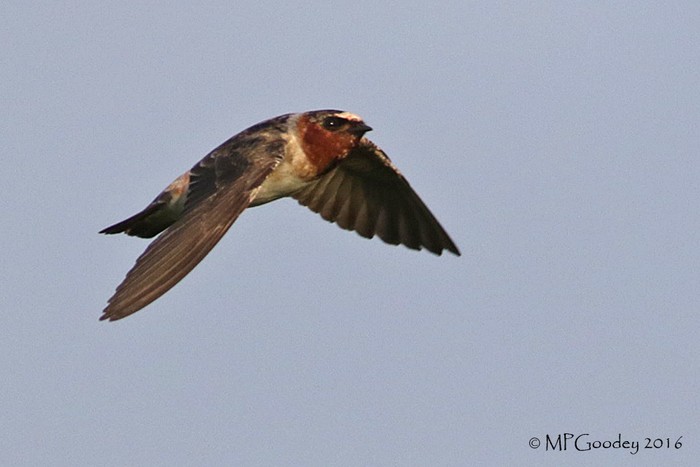
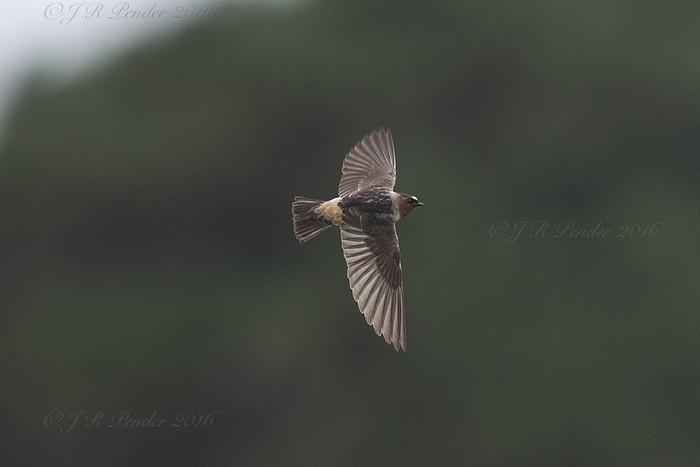
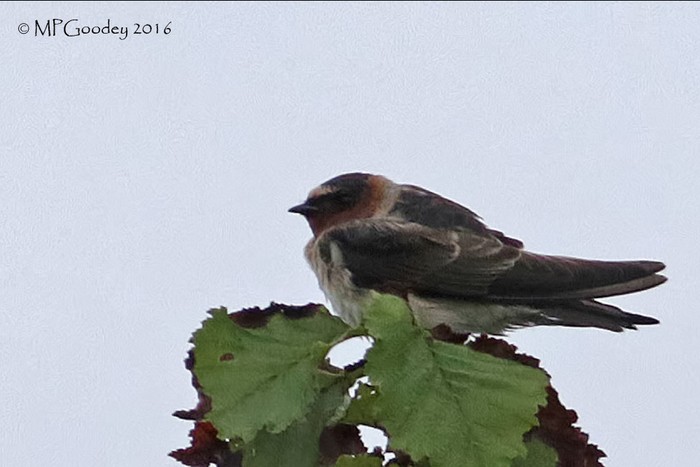
Still present this the week was another of this year’s seemingly inexhaustible supply of ‘firsts’ or at least potential ‘firsts’ - the Western Purple Swamphen at Alkborough, Lincolnshire. Having apparently disappeared on 31st, it promptly reappeared on 1st and was then present, showing on and off until at least 6th. The question of whether it is the same bird as that at Minsmere is probably settled by a similar-looking gap in the left wing. Despite giving would-be twitchers a bit of a runaround, this bird should by now have been seen by most. As to how long it might stay or where it might go next, only time will tell.
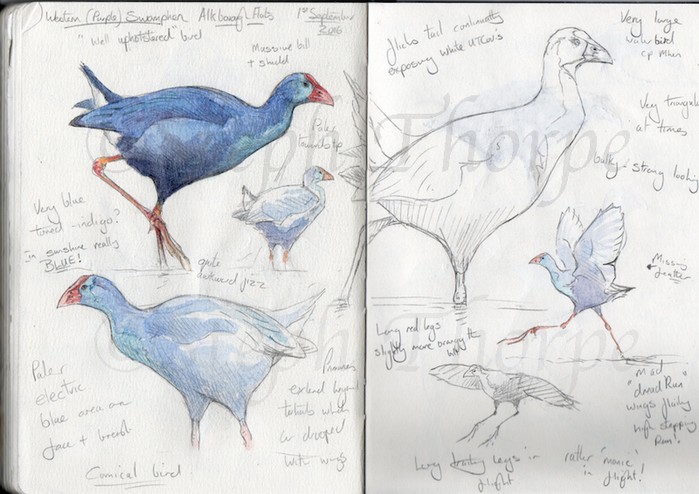
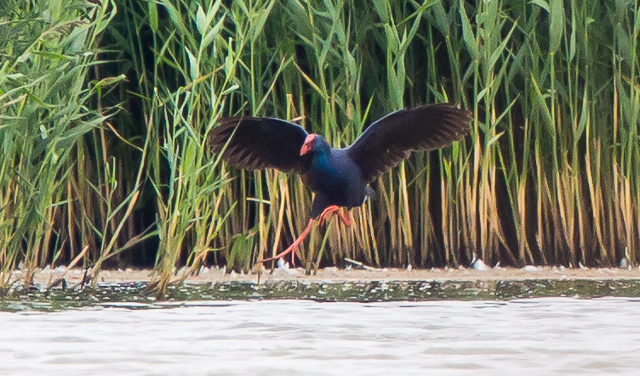
Next in the rankings (and somewhat out of context in the parade of birds from the west) was a first-winter Moltoni’s Subalpine Warbler at Nanjizal, Cornwall on 1st. The identification of first-winters is of course dependent on call so presumably this was the case here. This would represent the eighth record for Britain but the first autumn record, only the second mainland record and the first for Cornwall.
Back to non-passerines and the best wader find of the week by far was a gorgeous juvenile Western Sandpiper in the stunning setting of Aird an Runair, North Uist, Western Isles on 31st and still present to 4th. This was a classic individual with fire-based scapulars, very white face and underparts, a long, fine-tipped bill and a high-pitched ‘jeet’ call. It is the second Western Sandpiper of the autumn (following the bird at Tacumshin in July) and is potentially the first record for the Western Isles pending the resolution of the identity of a ‘problem stint’ on South Uist in September 2012.
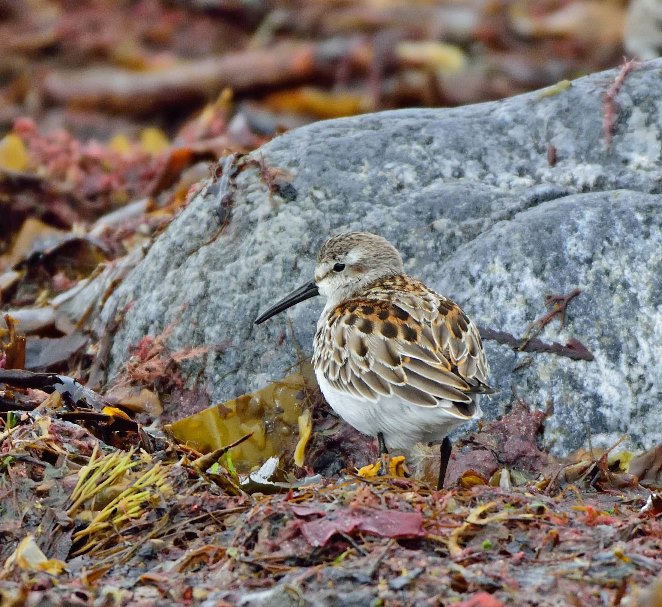
Meanwhile, back in the seabirds department, this week saw a further three Fea’s/Zino’s Petrels added to this autumn’s already impressive tally. On 3rd birds passed Galley Head and Cape Clear, both Cork, and Porthgwarra, Cornwall - all classic locations for this charismatic species/pair.
With no mention this week of Aberdeenshire’s White-winged Scoter, the list of very rare long-stayers shrinks to two - the Dalmatian Pelican still in Cornwall but now favouring Helston Loe Pool and the Hudsonian Whimbrel still in the same county at Perranuthnoe.
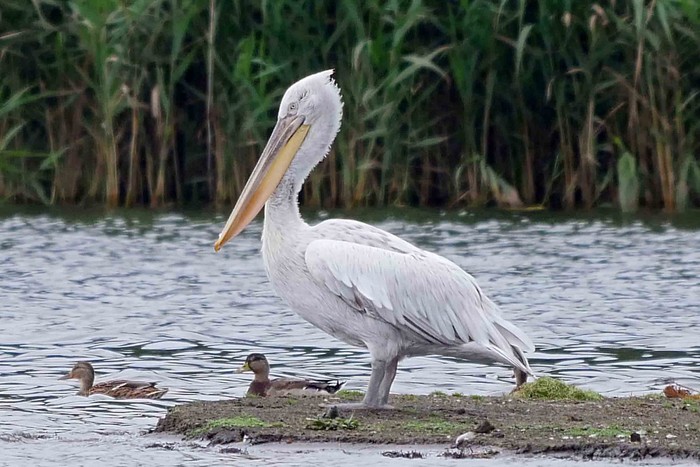
From today a Hudsonian Whimbrel from Boat cove, Cornwall pic.twitter.com/Vs8qfOph8F
— Steve Minhinnick (@steviem69) August 28, 2016
This week’s ‘Euronews’ features a Swinhoe’s Petrel off the Azores on 31st, an Indian Pond Heron of unknown origin in Finland from 31st to 2nd and a Black-bellied Storm-petrel off Lanzarote, Canaries on 4th. Of perhaps more relevance to most of us, however, an early Olive-backed Pipit was in Norway on 5th.
This was another big week for big shearwaters, with two major movements noted. The first of these brought at least 372 Cory’s Shearwaters to Galley Head, Cork on 1st but a much bigger movement on 3rd produced a remarkable 2,725 past Cape Clear, Cork with 824 off Galley Head, also Cork, 101 off Porthgwarra, Cornwall, over forty off the Isles of Scilly and one as far up the Channel as Start Point, Devon. In the North Sea one was off Whitburn, Durham on 31st and then on 4th there was a small influx with singles off Whitburn, Durham, Staithes, Yorkshire, Hadston Carrs, Northumberland and Blakeney Point, Norfolk. Next day saw, in Yorkshire, two off Flamborough, Filey and Scarborough and a single off Long Nab with further north, singles off Hartlepool, Cleveland, Whitburn, Durham and Newbiggin, Cresswell, Beadnell Point, Low Hauxley and the Farne Islands, all Northumberland (though presumably a degree of duplication is involved here).
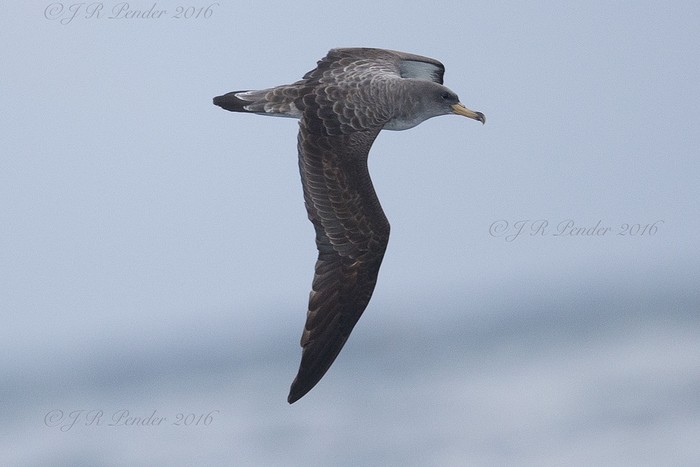
Great Shearwaters were well represented too with at least 458 off Galley Head, Cork on 1st and, on 3rd, perhaps as many as 4,245 off Cape Clear and 1,479 off Galley Head, both Cork, 18 off Porthgwarra, Cornwall and one off Start Point, Devon. On 2nd, four had passed Strumble Head, Pembrokeshire whilst 34 were off Pendeen, Cornwall on 4th with another off Strumble Head. Eleven were off a Scilly pelagic on 5th and at least 30 off a pelagic off Galley Head on 6th. There were no records from the North Sea, however.
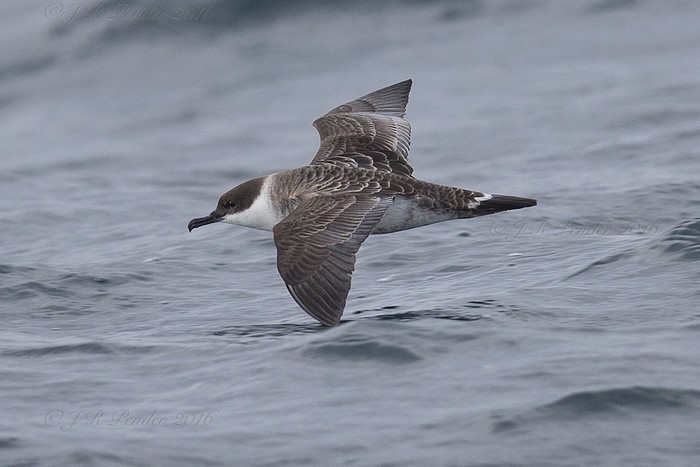
Turning to other rare seabirds, the week’s Wilson’s Petrels were on Scilly pelagics on 1st and 5th and on a pelagic off Galley Head, Cork on 6th. Long-tailed Skuas were a little more in evidence with, in the west, singles off Bridges of Ross, Clare and in the Minch, Western Isles on 31st and two off Start Point, Devon on 3rd. In the North Sea birds were off Spurn, Yorkshire on 31st, Musselburgh, Lothian on 1st and, in a brief spell of northwesterlies on 4th, at Spurn and Filey (two), both Yorkshire, Whitburn, Durham and Hartlepool, Cleveland. Another was off Corton and Southwold, both Suffolk, on 5th with another off Southwold on 6th, two off Lowestoft, also Suffolk, and one off Barns Ness, Lothian the same day.
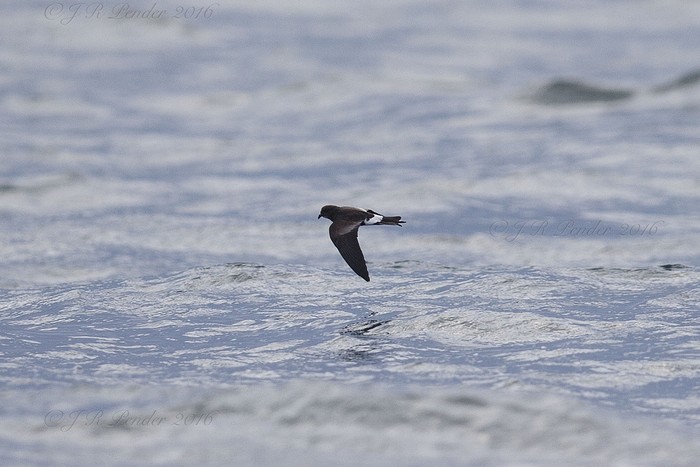
A sprinkling of Sabine’s Gulls included singles at Strathy Point, Highland and Melmore Head, Donegal on 31st, two off Strumble Head on 2nd and four there on 4th and other singles off Skye and Reiff, both Highland, on 4th. Another was off Flamborough, Yorkshire on 5th with, more unusually, one inland at Sandbach, Cheshire the same day. Finally singles were off Whitburn, Durham, Flamborough, Yorkshire and South Uist, Western Isles on 6th.
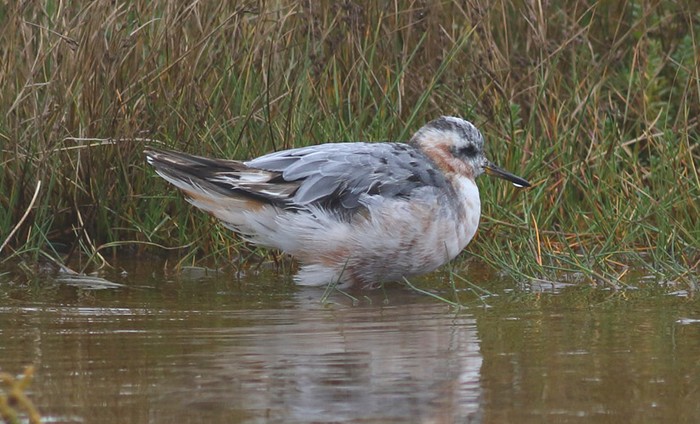
A few Grey Phalaropes were noted - singles off Bridges of Ross on 31st, Strumble Head and Little Skellig, Kerry on 2nd, at Steart, Somerset on 4th to 5th and at Blashford Lakes, Hampshire and Lisvane, Glamorgan, on 5th, both remaining to 6th. Two more flew past South Uist, Western Isles on 6th.
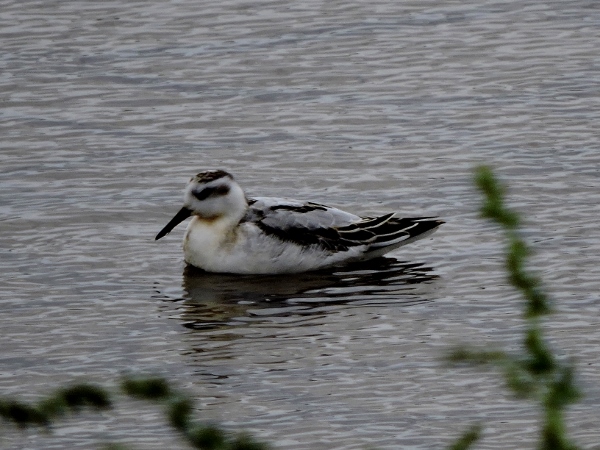
Balearic Shearwaters were, as always, concentrated in the Southwest where the peak count was 58 off Lamorna, Cornwall on 5th but a few birds were also in the North Sea - off Whitburn, Durham on 2nd, 3rd and 4th, Flamborough, Yorkshire on 3rd and up to two between Blakeney Point and Sheringham, Norfolk and one off Lowestoft, Suffolk on 4th. Others were off Southwold, Suffolk and Hartlepool, Cleveland on 5th. In western Scotland two were off Turnberry Point, Ayrshire on 2nd with others off Frenchman’s Rocks, Argyll on 3rd and Saltcoats, Ayrshire on 6th.
The only rare ducks were the drake Black Duck still at Strontian, Highland on 2nd and the newly-discovered drake King Eider at Delnies, Highland to at least 4th. A drake Surf Scoter near Kinnaber, Angus on 4th has apparently been there for over a fortnight.
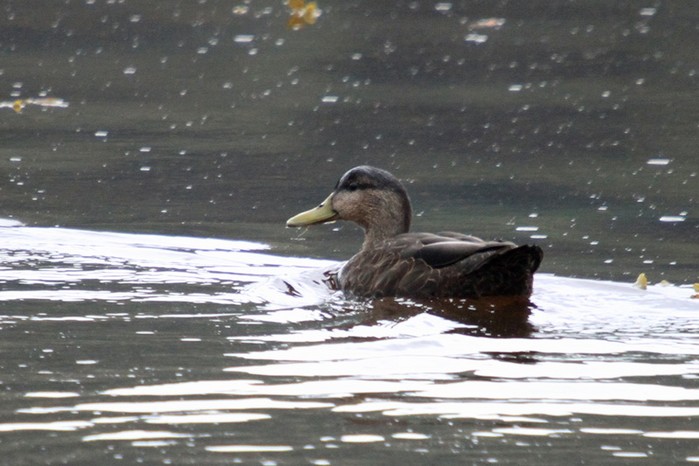
The best of the long-legged birds was a Black Stork near Stradbroke, Suffolk on 31st, not far from where one was reported on 22nd August - presumably one is lingering undetected in the area somewhere.
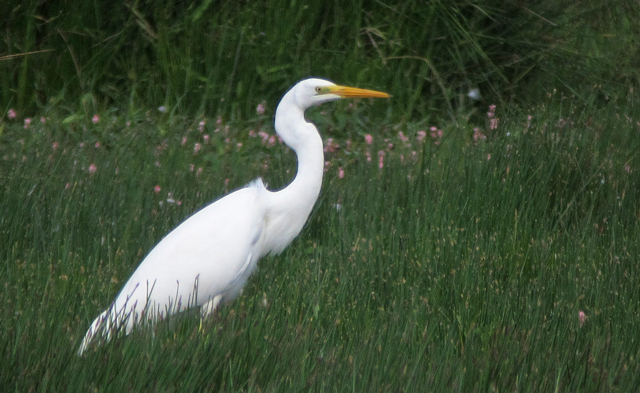
Turning to herons and egrets, single-site Great White Egret counts reached 13 at Ham Wall/Shapwick Heath, Somerset and five at Dungeness, Kent. Cattle Egrets remained at Tacumshin, Wexford, Marshside, Merseyside and Dungeness, Kent whilst a new bird was at Sea Palling, Norfolk on 5th. Two Purple Herons were new at Malltraeth, Anglesey on 5th whilst the long-stayer was still at Otmoor, Oxfordshire all week.
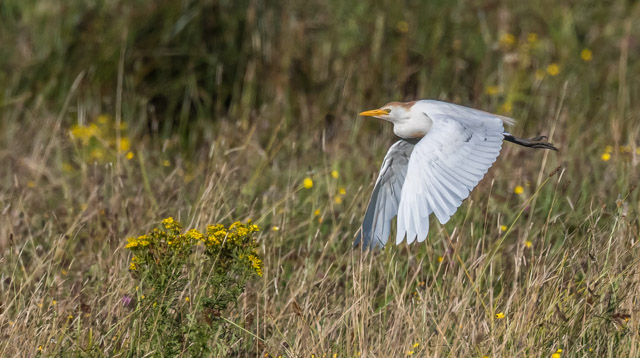
Glossy Ibises continued to frequent a list of largely familiar locations - two at Ham Wall, Somerset and singles at Wadebridge, Cornwall, Strumpshaw Fen, Norfolk, Pagham, Sussex, Lurgangreen, Louth, Vange Marsh, Essex, Fremington Quay, Devon, Austerfield, Hatfield Moor and Potteric Carr, all Yorkshire, and the Rogerstown Estuary, Dublin.
Spoonbill totals included a massive 41 at Stiffkey Fen and 27 at Titchwell, both Norfolk, 27 at Aldeburgh, Suffolk, 13 at Whitton Sands, Yorkshire and 12 at Gibraltar Point, Lincolnshire and Burton Mere, Cheshire and Wirral. Finally, the Common Crane was still on Benbecula, Western Isles to at least 6th with another far-flung individual near Wick, Highland on 3rd.
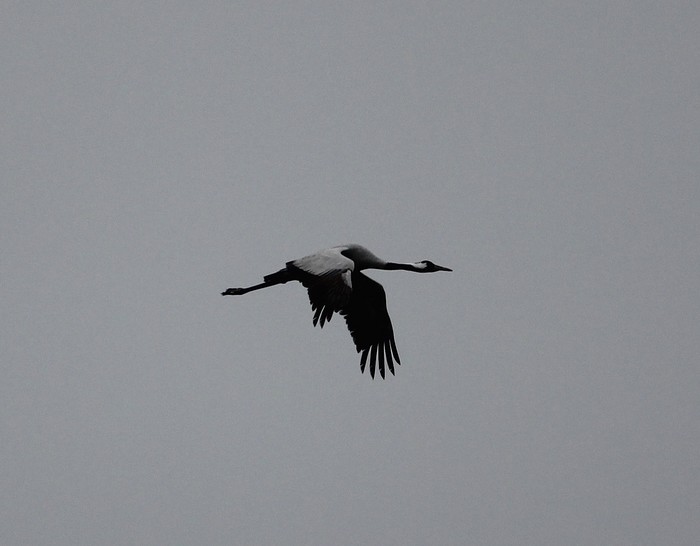
At least fifteen Honey-buzzards were reported, all south of Lincolnshire apart from one over Steelend, Fife on 4th. Montagu’s Harriers were at Cogden Beach, Dorset on 31st and Dungeness, Kent on 3rd.
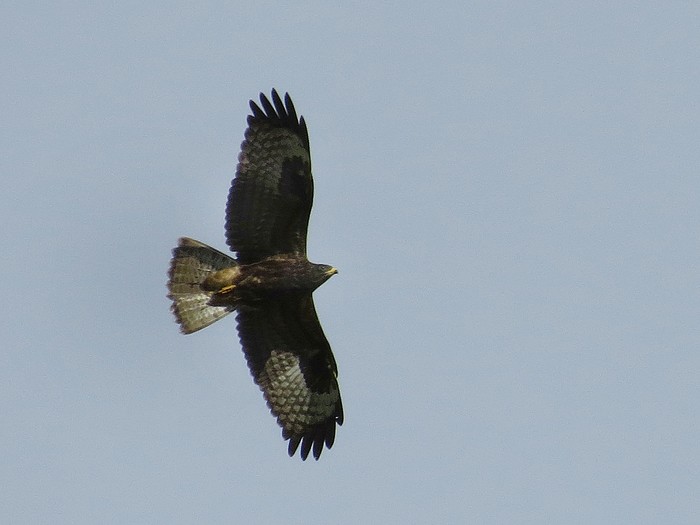
The Spotted Crake was still at North Cave, Yorkshire to at least 5th.
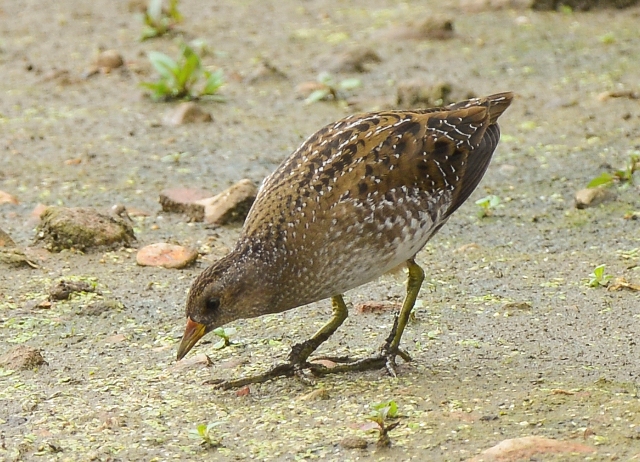
The main wader event of the week was the noticeable influx of Pectoral and Buff-breasted Sandpipers , with at least twenty of the former and seventeen of the latter noted. The distribution of Pectoral Sandpipers was evenly split between Ireland/western Britain and the east coast, suggesting perhaps that birds were arriving from both west and east. By contrast, almost all the Buff-breasted Sandpipers were in Ireland and western Britain and spoke of direct transatlantic arrivals. Scotland did well for the latter with singles at the Butt of Lewis and Balranald, Ardivachar and Boisdale, all Western Isles, and up to five on Tiree, Argyll. Ireland produced birds at Tacumshin, Wexford and Slyne Head, Galway with, in Wales, one on Bardsey, Gwynedd and, in England, two on St. Mary’s, Isles of Scilly and singles at Marazion and Siblyback Reservoir, both Cornwall. The only bird away from the west was at Hatfield Moor, Yorkshire on 2nd.
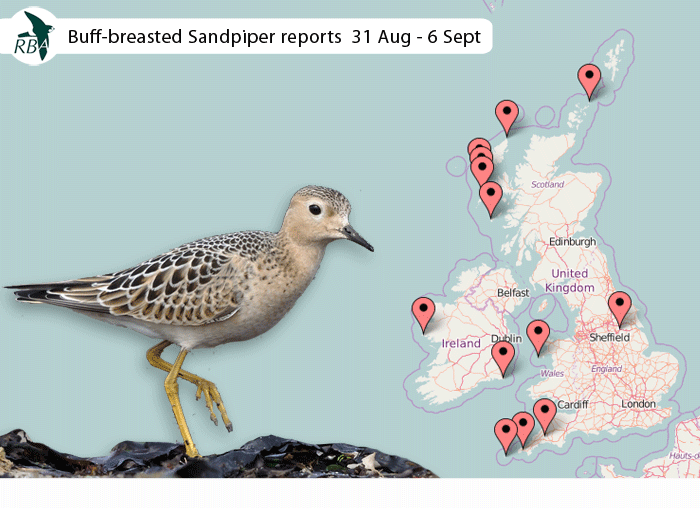
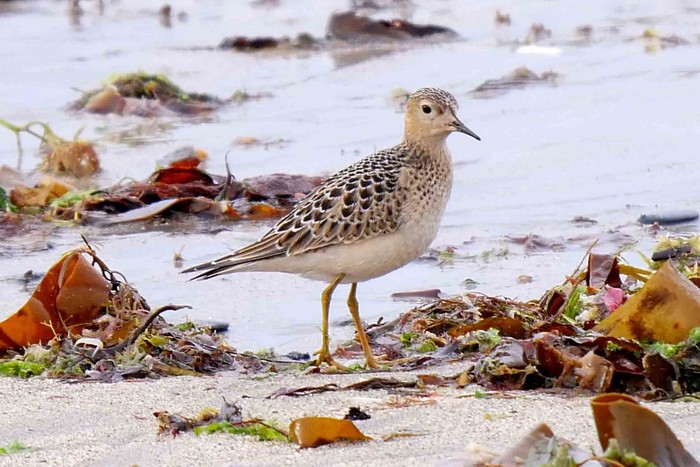
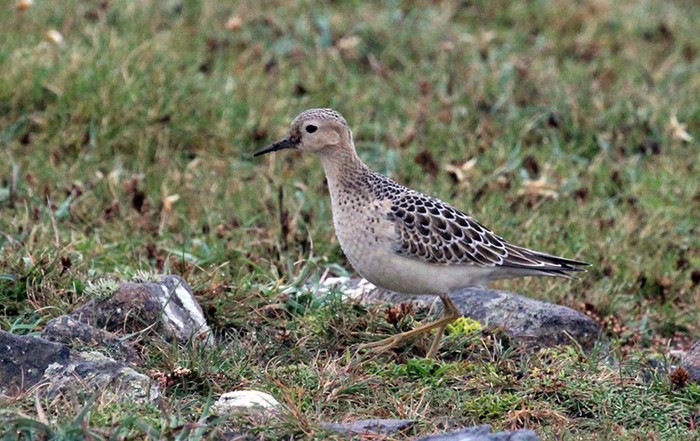
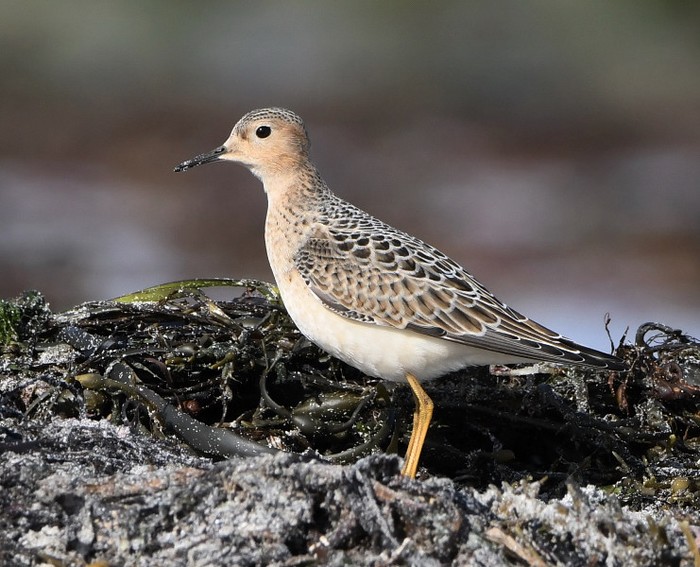
This latter site also played host to a Baird’s Sandpiper on 31st and again on 6th. Other rare American waders included another Baird’s at Myroe Levels, Derry on 4th, the Semipalmated Sandpiper still at Ballyferriter, Kerry to at least 3rd with others in Kerry at Carrahane Strand on 2nd and Fahamore on 5th, Spotted Sandpipers at Cape Clear, Cork on 31st and Great Skellig, Kerry on 31st to 1st, a Lesser Yellowlegs still at Vange Marsh, Essex to 4th and others on St. Mary’s, Isles of Scilly on 3rd to 6th and on the Alaw Estuary, Anglesey on 6th, an American Golden Plover on Unst, Shetland on 3rd and the White-rumped Sandpiper still at Amble, Northumberland to at least 3rd with one at Castle Island, Northumberland on 6th.
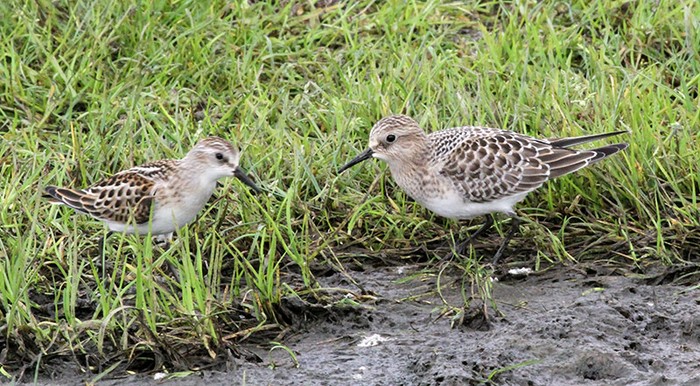
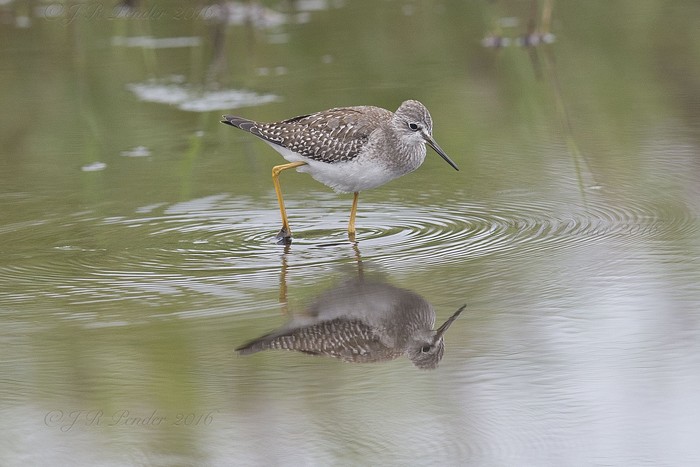
As for Palearctic waders, the adult Pacific Golden Plover remained on Tiree to 31st and a Temminck’s Stint was on St. Mary’s and St. Agnes, Isles of Scilly to at least 6th with two at Blythburgh, Suffolk on 3rd and one at Welney, Norfolk on 4th.
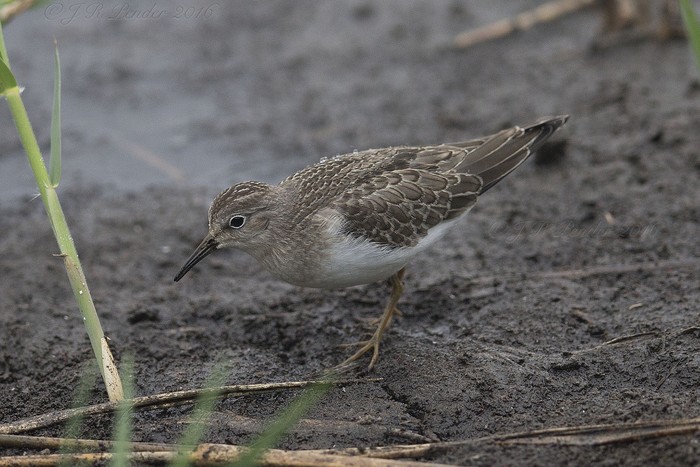
A Dotterel was on the Ythan Estuary, Aberdeenshire on 31st with one at Kinder Scout, Derbyshire on 3rd, four at Wadebridge, Cornwall, one at West Soar, Devon and two at Low Newton, Northumberland on 4th and one on St. Agnes, Isles of Scilly on 5th to 6th. Finally, Red-necked Phalaropes were at Dungeness, Kent on 2nd to 4th, Thorney Island, Sussex on 5th and 6th and off Weybourne, Norfolk on 6th.
Last week’s two rare gulls - the ‘Azorean Gull’ at Stanwick Gravel Pits, Northamptonshire and the Bonaparte’s Gull at Faversham, Kent - were both still present, the former on 2nd and the latter to at least 5th. In Scotland, the summering Glaucous Gull remained at Ullapool, Highland and the Iceland Gull on Tiree, Argyll whilst in Ireland another Glaucous Gull was at Rossaveel, Galway on 6th, an Iceland Gull at Roonagh Lough, Mayo (the site of the recent Royal Tern) on 4th and a second-winter Ring-billed Gull at The Lough, Cork on 3rd.
This week saw a small arrival of juvenile White-winged Black Terns with singles off Staithes, Yorkshire and at Rishton Reservoir, Lancashire on 4th, off Cliffe, Kent on the evenings of 5th and 6th and (presumably the same bird) off Canvey Island, Essex on 6th and at Christchurch Harbour, Dorset on 6th also. Otherwise the Forster’s Tern was still in Louth to at least 5th and ‘out of range’ Roseate Terns were as follows: one at Greatstone-on-Sea, Kent and two off Strumble Head on 31st and at least three at various sites between Spurn, Yorkshire and South Gare, Cleveland on 4th to 5th.
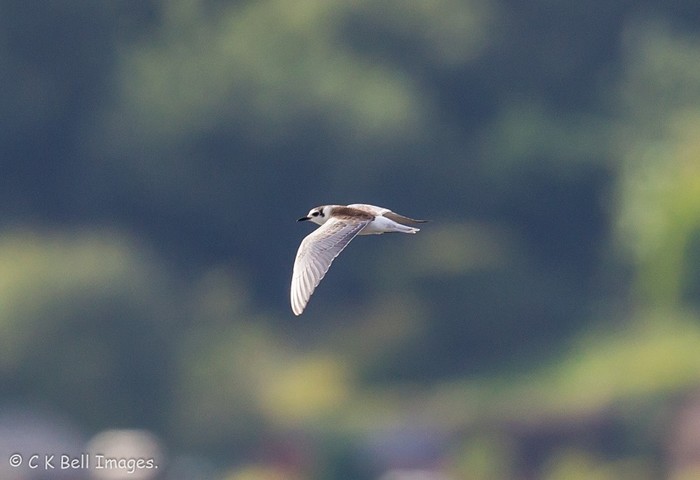
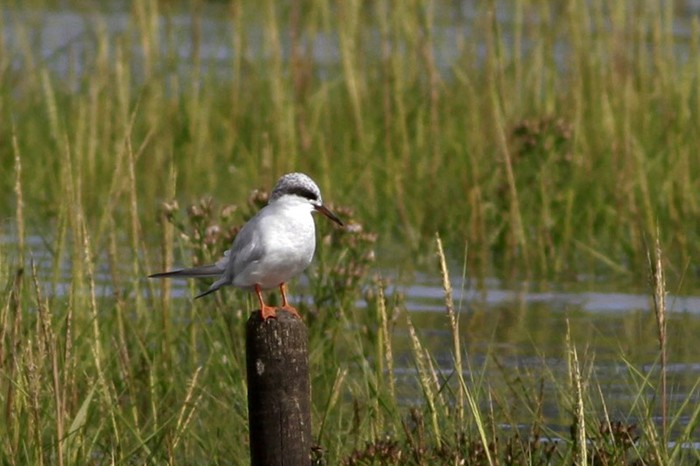
Hoopoes were at Portsmouth, Hampshire on 31st and at Great Hinton, Wiltshire on 3rd. This was not a great week for passerines, with no significant ‘falls’ and just a scattering of rarities, mainly in the Northern Isles. Amongst these were last week’s Booted Warblers still on Fair Isle, Shetland to 1st and then again on 4th and 5th and at Sumburgh, also Shetland, to 3rd. New were a Greenish Warbler on Fair Isle on 4th and 5th and single Arctic Warblers on Unst, Shetland and Sanday, Orkney the same day. A Rose-coloured Starling was also on Fair Isle on 31st to 2nd.
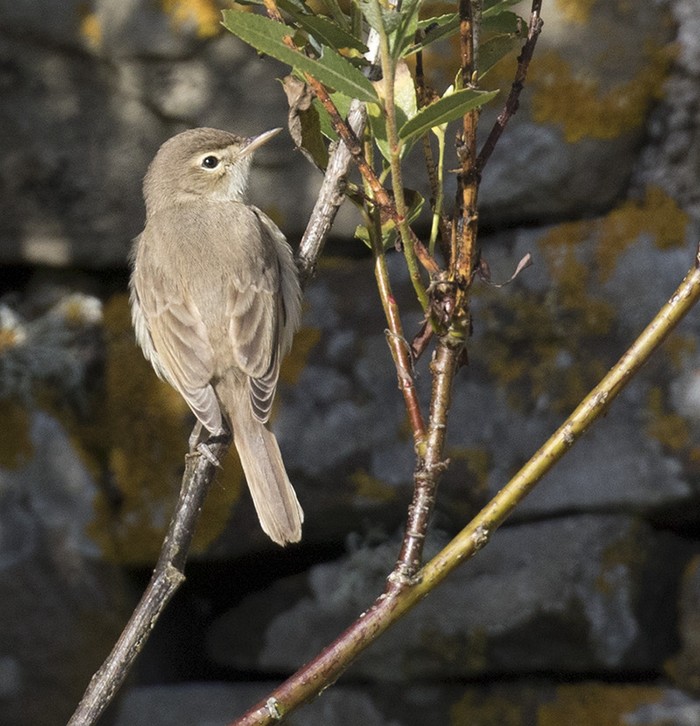
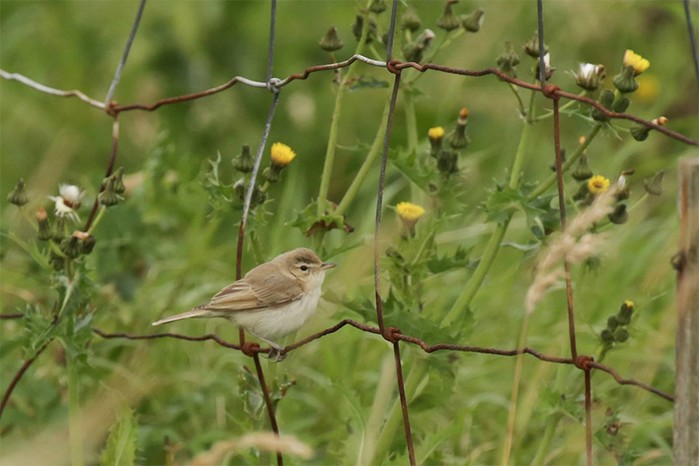
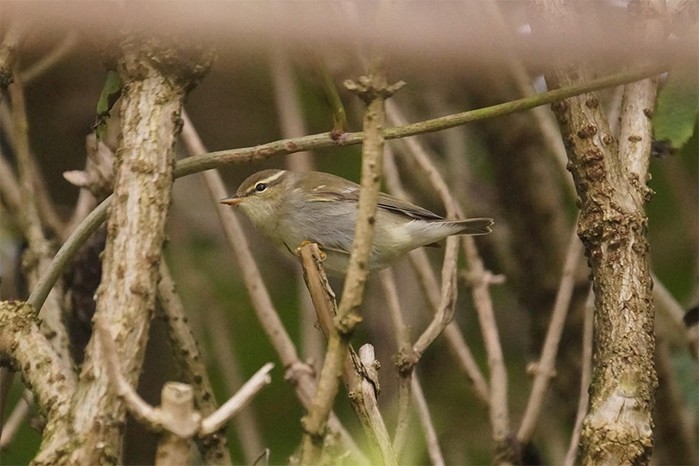
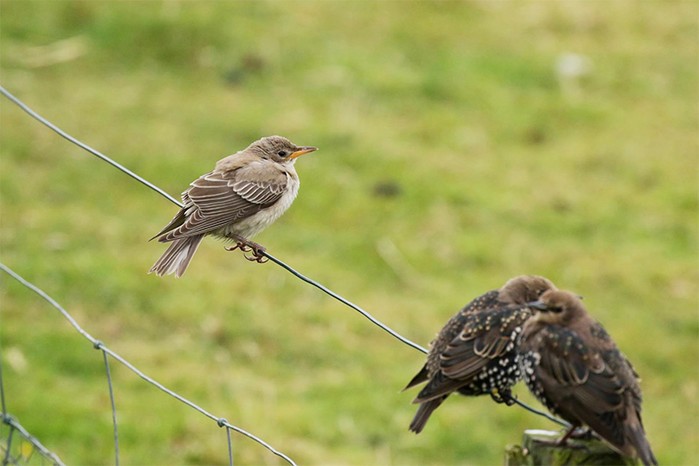
Elsewhere the best finds were Citrine Wagtails at Radipole, Dorset on 1st and (unusual in the west) at Longtown, Cumbria on 3rd to 5th, an Aquatic Warbler at Lytchett Fields, Dorset on 31st to 1st, a juvenile Woodchat Shrike near Sizergh Castle, Cumbria on 4th to 6th and a Bonelli’s Warbler species on St. Mary’s, Isles of Scilly on 6th.
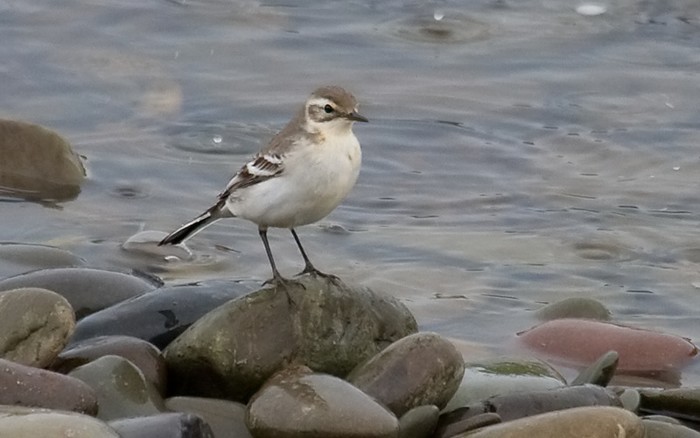
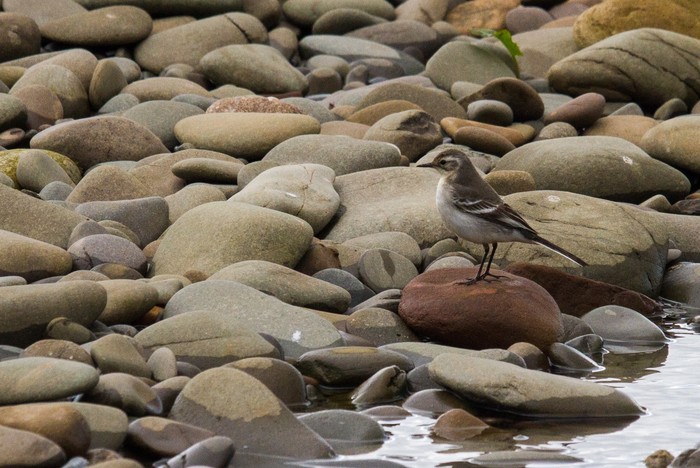
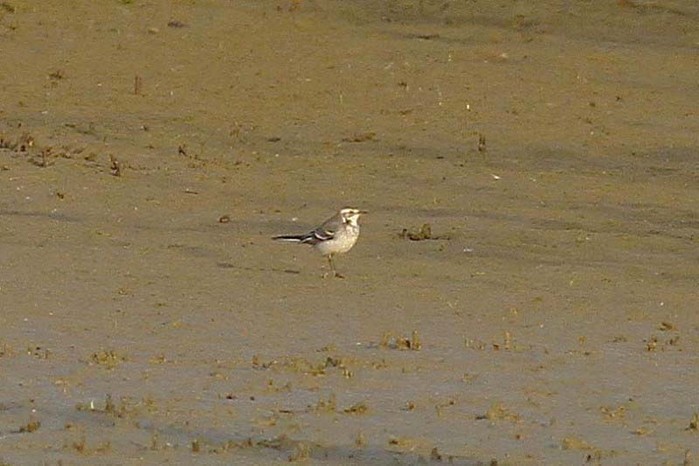
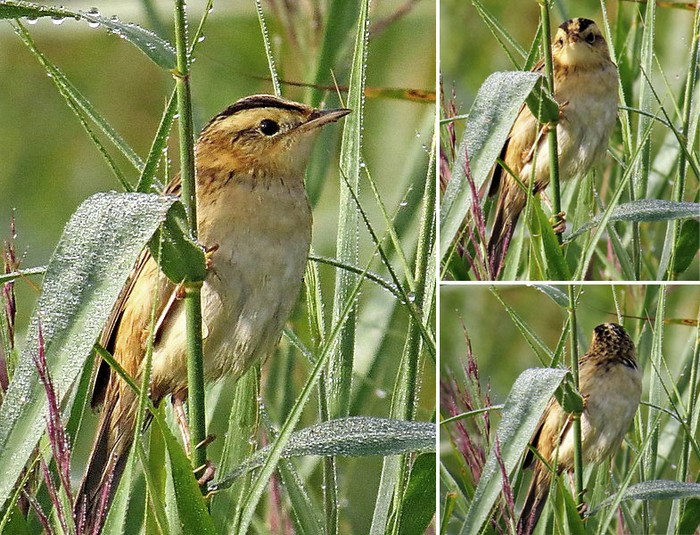
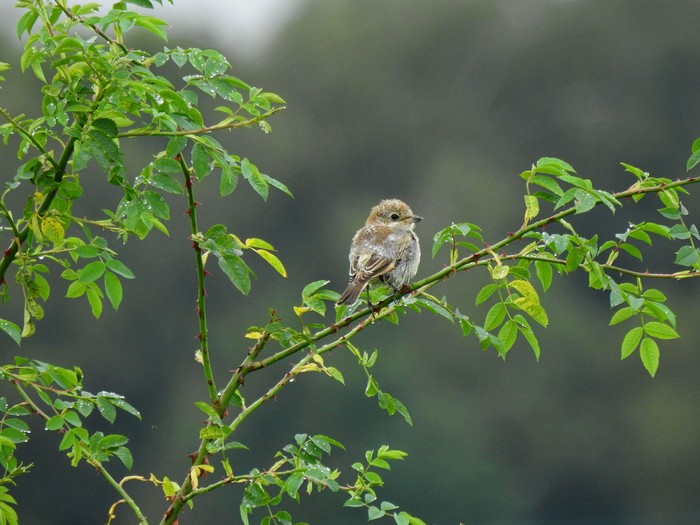
Turning to scarcities, Wrynecks dominated the proceedings, many left over from the week before. Over forty were noted, most in southern Britain but one was at Loch of Strathbeg, Aberdeenshire and another on Fair Isle and there were around seven or eight inland birds.
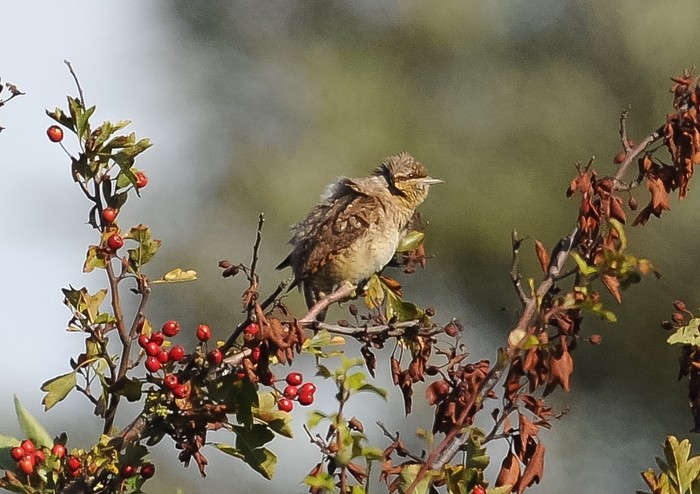
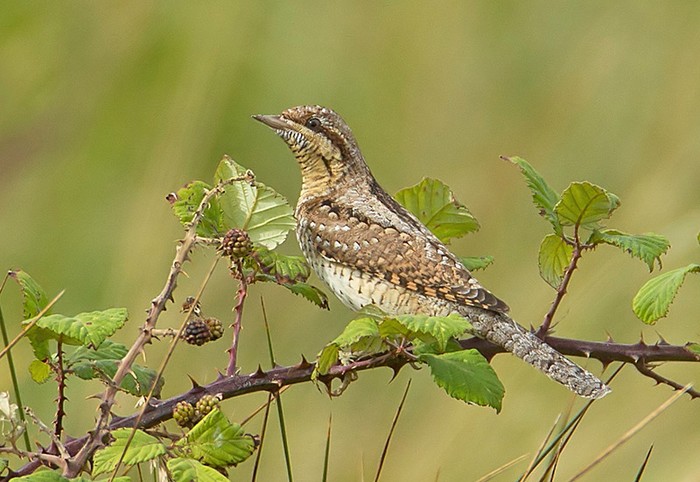
After last week’s good showing, Icterine Warblers were noticeably scarce, with just one at Flamborough, Yorkshire on 1st, two on Fair Isle and singles at Scousburgh and on Unst, all Shetland, on 4th and at Gibraltar Point, Lincolnshire on 5th and on Skomer, Pembrokeshire on 6th. Melodious Warblers were on Bardsey, Gwynedd on 1st to 6th and Skomer on 6th and a Marsh Warbler was on Unst, Shetland on 4th.
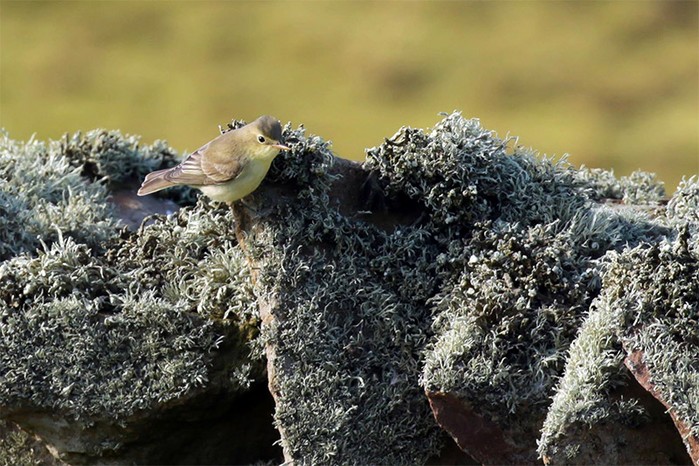
The week’s only Red-breasted Flycatcher was on North Ronaldsay, Orkney on 4th, Barred Warblers were at Spurn, Yorkshire, Fair Isle (at least three), Virkie and Whalsay, all Shetland, Blackhall Rocks, Durham and Holland Haven, Essex and Red-backed Shrikes at St. Martin’s, Isles of Scilly, on the Isle of Wight and at Whitburn, Durham and Lundy, Devon.
Turning to seedeaters, Ortolan Buntings were at Spurn, Yorkshire and Beachy Head, Sussex on 31st, Portland, Dorset on 1st to 2nd, Springhead Hill, Sussex on 2nd to 3rd, Poole Harbour, Dorset on 3rd and Seaford Head, Sussex and St. Martin’s, Isles of Scilly on 6th. In addition, two were sound-recorded over Stoborough, Dorset on the night of 30th/31st and one was heard over Portland on the evening of 5th with another sound-recorded over Poole. Finally, Common Rosefinches were at Blackhall Rocks, Durham on 1st and Fair Isle, Whalsay and Unst (two), all Shetland, on 4th.
Next week brings more hot air from the south followed by a return to Atlantic air and (still mild) southwesterlies. Things look bleak therefore for continental passerines and it looks as though the west will remain the place to be. There are likely to be more seabirds and American waders and perhaps more American passerines too (Purple Martin? Yellow Warbler?) but September is a hugely unpredictable month (as this week has already amply demonstrated) and it is certain that more surprises are just around the corner, perhaps even on the east coast. There is even talk of Hawk Owls on the move in southwest Norway………..
Andy Stoddart
7 September 2016
Please note: we put a lot of time and effort into sourcing and and producing the images, videos and graphics for each roundup. Some of you (probably Apple users) may notice some photos etc. that appear to have incorrect captions. Please try refreshing the page as they are correcty captioned. If after a refresh they are still showing the incorrect captions then please email us
Contributors websites











